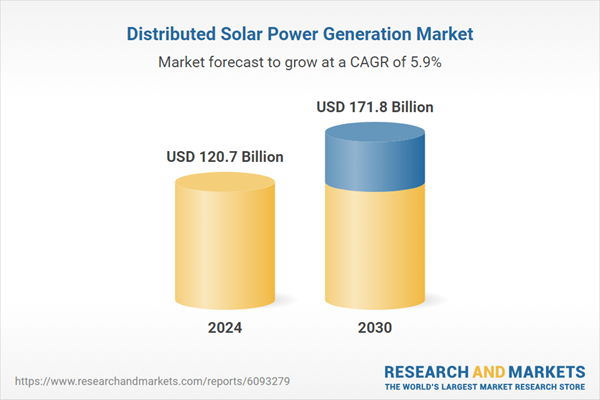Speak directly to the analyst to clarify any post sales queries you may have.
10% Free customizationThis report comes with 10% free customization, enabling you to add data that meets your specific business needs.
Supportive government policies - such as tax incentives, subsidies, and net metering - are also lowering financial barriers for consumers. Technological advancements, including high-efficiency panels, smart inverters, and integrated storage solutions, are boosting system performance and reliability. Distributed solar power enhances energy independence and grid resilience, especially in developing economies where modular deployment supports sustainable infrastructure. As the world shifts toward cleaner energy solutions, distributed solar is becoming a pivotal element in achieving global energy transition goals.
Key Market Drivers
Declining Cost of Solar Photovoltaic (PV) Systems and Energy Storage Solutions
The steep decline in costs of solar PV panels and energy storage systems is significantly propelling the distributed solar power generation market. Solar panel prices have plummeted by over 80% in the last decade, driven by technological progress, economies of scale, and increased global competition. Similarly, advancements in energy storage - particularly lithium-ion batteries - have improved affordability and efficiency.These trends make distributed solar installations more viable for homes, businesses, and industrial facilities. In developing regions, where grid infrastructure is often limited, cost-effective solar solutions provide a practical path to electrification and energy independence. Additionally, business models such as leasing and power purchase agreements (PPAs) further lower upfront costs, allowing broader market access. The financial and environmental benefits of adopting distributed solar systems are encouraging rapid adoption globally, especially in regions with rising electricity demand and infrastructure constraints.
Key Market Challenges
Grid Integration and Infrastructure Limitations
A major obstacle for the distributed solar power generation market is integrating decentralized solar systems into existing power grids. Traditional grids were built for centralized, one-way power flow, whereas distributed solar introduces variable, bidirectional electricity movement, complicating stability and management. Solar energy’s intermittent nature - affected by weather and time of day - can cause voltage fluctuations and reliability issues if not properly managed.Upgrading infrastructure to include smart inverters, real-time monitoring, and energy management systems is costly and technically demanding. Furthermore, many developing countries face infrastructural deficiencies such as limited grid reach, outdated transmission lines, and minimal automation, which hinder solar integration. Complex interconnection procedures and regulatory hurdles also slow down deployment. Addressing these issues requires significant investment in grid modernization and streamlined policy frameworks to support large-scale distributed solar adoption.
Key Market Trends
Increasing Adoption of Hybrid Solar Systems with Energy Storage
An emerging trend in the distributed solar power generation market is the growing implementation of hybrid solar systems that combine PV generation with battery storage. These systems enable users to store surplus energy for use during non-sunny hours, enhancing energy reliability and reducing grid dependency. Lithium-ion battery prices have decreased, while performance has improved, making hybrid systems more affordable and appealing to a wide range of users. These systems are particularly beneficial in areas with unstable grids or frequent outages. Moreover, hybrid setups are compatible with evolving trends like electric vehicle (EV) integration and smart home energy management. Incentive programs and evolving net metering policies that reward stored energy usage are further encouraging adoption. Commercial and industrial users, aiming to cut peak demand charges and enhance energy efficiency, are increasingly investing in hybrid systems to improve cost savings and resilience.Key Market Players
- Suntech Power Holding Co. Ltd.
- Trina Solar Ltd
- Canadian Solar Inc.
- Yingli Green Energy Holding Co. Ltd.
- Schott Solar Ag
- Leonics Company Limited
- Hanwha Group
- Sharp Corporation
Report Scope:
In this report, the Global Distributed Solar Power Generation Market has been segmented into the following categories, in addition to the industry trends which have also been detailed below:Distributed Solar Power Generation Market, By Product Type:
- Monocrystalline (Mono-SI)
- Polycrystalline (p-Si)
- Amorphous Silicon (A-Si)
- Concentrated PV Cell (CVP)
Distributed Solar Power Generation Market, By Application:
- Residential
- Commercial
- Utility-Scale
Distributed Solar Power Generation Market, By Installation:
- Ground Mounted
- Roof-Top
Distributed Solar Power Generation Market, By Region:
- North America
- United States
- Canada
- Mexico
- Europe
- Germany
- France
- United Kingdom
- Italy
- Spain
- Asia Pacific
- China
- India
- Japan
- South Korea
- Australia
- South America
- Brazil
- Colombia
- Argentina
- Middle East & Africa
- Saudi Arabia
- UAE
- South Africa
Competitive Landscape
Company Profiles: Detailed analysis of the major companies present in the Global Distributed Solar Power Generation Market.Available Customizations:
With the given market data, the publisher offers customizations according to a company's specific needs. The following customization options are available for the report.Company Information
- Detailed analysis and profiling of additional market players (up to five).
This product will be delivered within 1-3 business days.
Table of Contents
Companies Mentioned
- Suntech Power Holding Co. Ltd.
- Trina Solar Ltd
- Canadian Solar Inc.
- Yingli Green Energy Holding Co. Ltd.
- Schott Solar Ag
- Leonics Company Limited
- Hanwha Group
- Sharp Corporation
Table Information
| Report Attribute | Details |
|---|---|
| No. of Pages | 188 |
| Published | June 2025 |
| Forecast Period | 2024 - 2030 |
| Estimated Market Value ( USD | $ 120.7 Billion |
| Forecasted Market Value ( USD | $ 171.8 Billion |
| Compound Annual Growth Rate | 5.9% |
| Regions Covered | Global |
| No. of Companies Mentioned | 8 |









